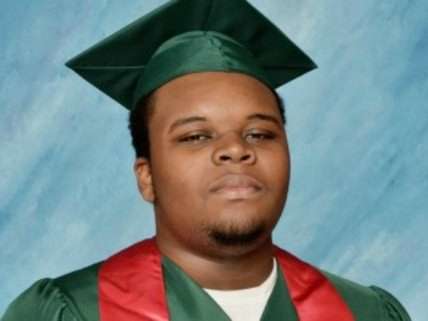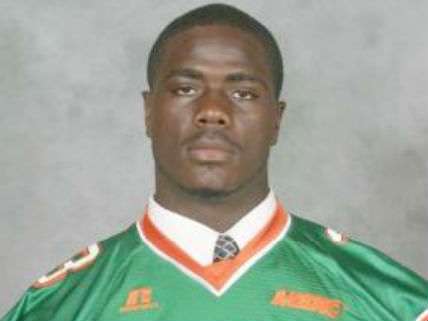The Missing Footage of Michael Brown's Shooting
The first Ferguson anniversary underlines the importance of video evidence in disputes about police violence.

About a year before Darren Wilson shot and killed Michael Brown in Ferguson, Missouri, another white police officer, Randall Kerrick, shot and killed another unarmed black man, Jonathan Ferrell, near Charlotte, North Carolina. Both shootings made the national news, but it was Michael Brown's death, a year ago yesterday, that sparked days of public protests and gave new energy to the #BlackLivesMatter movement, which had formed in response to the 2012 shooting of Trayvon Martin, an unarmed black teenager, by George Zimmerman, a Hispanic neighborhood watch volunteer in Sanford, Florida.
The dramatically different public responses to the police shootings of Ferrell and Brown can be largely explained by the dramatically different official responses. Kerrick was immediately arrested and charged with voluntary manslaughter, and his trial began last week. Wilson was never charged with a crime. Three months after the shooting, a grand jury convened by St. Louis County Prosecuting Attorney Robert McCulloch, after proceedings in which McCulloch's underlings acted more like defense attorneys than prosecutors, declined to indict Wilson.

Although the two incidents were broadly similar, local officials and police critics were basically on the same page in Charlotte but took radically different views of the shooting in Ferguson. In explaining that contrast, it is hard to overstate the importance of video evidence, which played a crucial role in Charlotte, where police cars had dashcams, but was missing in Ferguson, where the police department had purchased a couple of dashcams but had not installed them yet. Various disputed uses of police force that have come to light in the year since Wilson's deadly encounter with Brown reinforce the utility of dashcams, body cameras, and cellphones in holding armed agents of the state to account when they step over the line—and in vindicating them when they don't.
Kerrick shot Ferrell early in the morning on September 14, 2013, after Ferrell crashed his car and was mistaken for a burglar when he sought help at a nearby house. A 34-second dashcam video, played last week for the jury in Kerrick's trial, shows what happened after he and two other officers arrived at the scene in response to the report of a home intruder. Ferrell initially walks calmly toward the officers, until the light from a stun gun's laser sight appears on his chest. Then he takes off, running between two patrol cars. Ferrell is now off camera, but Kerrick can be heard repeatedly ordering him to the ground. Within three seconds of the first command, Kerrick fires four rounds, then another eight. From the moment that Ferrell starts running until Kerrick completely empties his weapon, 11 seconds elapse.
That video persuaded Charlotte-Mecklenburg Police Chief Rodney Monroe to arrest Kerrick the day of the shooting. "Our investigation has shown that Officer Kerrick did not have a lawful right to discharge his weapon during this encounter," the police department said. Prosecutors argue that Ferrell ran between the police cars because he was alarmed by the laser lights on his chest, which as far as he knew came from a firearm. They say he fell to the ground after Kerrick fired four rounds at him but that Kerrick, who also had fallen to the ground after stumbling in a ditch while walking backward, fired eight more rounds because Ferrell kept moving. Ten of the bullets struck Ferrell.
Shortly after the shooting, in a videotaped interview that the jury saw on Friday, Kerrick said he fired when Ferrell failed to obey his commands and got within 10 feet of him. "It did not faze him," he said. "He kept coming toward me. I fired again." Kerrick said he ended up on the ground but he wasn't sure how, and Ferrell began climbing up his legs. "There was nothing I could do to get him off of me," he said. "Then I fired again." By contrast, in his opening statement last week, Kerrick's lawyer said Ferrell had tackled him and punched him in the face while trying to grab his gun.
It remains to be seen whether the jury will find Kerrick's self-defense claim plausible. But Darren Wilson's was, as a Justice Department report released last March shows. A combination of physical evidence and reports from the most credible eyewitnesses confirms that Brown, whom Wilson stopped because he (correctly) suspected him of involvement in a convenience store robbery, punched him through the window of his patrol car and grabbed at his gun; ran off after Wilson fired two shots, one of which hit Brown's thumb; turned around and approached Wilson after the officer got out of his car; and was moving toward him as Wilson fired eight more rounds. Given those facts, Wilson's avowed belief that Brown would seriously injure or kill him upon closing the distance between them seems reasonable, whether or not that was Brown's intent. One can argue about whether Wilson should have gotten out of his car to pursue Brown. But once he did, it is plausible that the circumstances justified his use of deadly force.
Without dashcam footage of the encounter between Wilson and Brown, however, it was difficult to assess the officer's self-defense claim, especially in light of conflicting eyewitness reports. And without video to disprove them, inflammatory accounts from eyewitnesses (or purported eyewitnesses)—including a discredited claim that Wilson had shot Brown while the latter was standing still with his arms in the air, trying to surrender—fanned the flames of outrage.
Local officials fed public distrust by failing to promptly identify Wilson and clearly outline his version of events. Without the context of the narrative that eventually emerged, the Ferguson Police Department's August 15 release of surveillance camera footage showing Brown stealing cigarillos from a convenience store and intimidating the clerk who tried to stop him seemed like an irrelevant attempt at character assassination.
During the grand jury proceedings, prosecutors highlighted evidence in Wilson's favor, a reversal of the usual approach, and portrayed Brown as a suspect rather than a victim. Even if the grand jury reached the correct result (and the Justice Department's report makes a strong case that it did), the rigged process highlighted the double standard that police officers enjoy when they kill people.
That double standard also was apparent in the case of George Zimmerman, who like Wilson had a credible self-defense claim that was backed by eyewitness testimony and physical evidence. He nevertheless had to go through the ordeal of a trial, during which it became abundantly clear that the prosecution could not come close to proving its case beyond a reasonable doubt. That does not necessarily mean Zimmerman's use of deadly force was legally justified, but his account was at least plausible, which was all that was required to acquit him.
The upshot, unfortunately, is that the #BlackLivesMatter movement's two seminal cases are not very good examples of unjustified deadly force deployed against African Americans. Also unfortunately, there is no shortage of other, more apposite cases, including the chokehold death of Eric Garner on Staten Island, the death of Freddie Gray in Baltimore as a result of injuries sustained during a ride in a police van, Sandra Bland's suicide in jail following a trumped-up arrest in Waller County, Texas, and the shootings of Tamir Rice in Cleveland, Walter Scott in North Charleston, and Samuel DuBose in Cincinnati. Video evidence played an important role in all of these cases—including Bland's, where it showed how a state trooper needlessly escalated a routine traffic stop into a felony arrest, and Gray's, where it showed him stepping into the police van unaided, proving that his disabling and ultimately lethal injuries occurred later.
As demonstrated by a grand jury's rejection of charges against Daniel Pantaleo, the officer who put Garner in a chokehold, video evidence is no guarantee of an indictment, let alone a conviction. The footage may omit important details, while others may be open to interpretation. Even the Los Angeles cops who beat Rodney King in 1991, an incident that gave us one of the best-known video records of police brutality, managed to convince a California jury that their use of force could be justified. In other cases, video evidence may unambiguously confirm an officer's account. If that had happened in Ferguson, the shooting of Michael Brown never would have acquired the symbolic significance it did.
Still, in situations where police use excessive force, a video record can make a decisive difference by counteracting the tendency of police departments, local prosecutors, and jurors to give cops a bigger benefit of the doubt than ordinary, badgeless citizens are apt to receive. Ray Tensing, the University of Cincinnati police officer who was indicted last month for murder in the death of motorist Samuel DuBose, claimed he fired in self-defense because he was being dragged by DuBose's car—an account that was contradicted by footage from the body camera Tensing was wearing. Michael Slager, the North Charleston police officer who killed Walter Scott after a routine traffic stop last April, claimed he "felt threatened" because Scott had grabbed his Taser. Cellphone video shot by a bystander showed Slager firing eight rounds at Scott as he ran away, which led to Slager's arrest. In cases like these, seeing is disbelieving.


Show Comments (324)